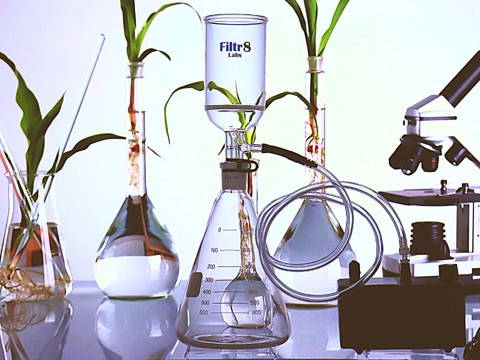Vacuum Filter System Advantages
In science laboratories the use of a vacuum filtering system offers numerous advantages. This technique is commonly employed for separating solid substances from liquids, providing several benefits that enhance efficiency, accuracy, and safety in the scientific lab setting.
- Increased Filtration Speed
- Enhanced Precision and Purity
- Reduced Contamination and Risk
- Increased Efficiency and Productivity
- Versatility and Flexibility
- Ease of Use

The use of a suction filtration system in science laboratories offers several advantages that enhance efficiency and accuracy. From increased filtration speed to reduced contamination risk, these systems provide a reliable and effective method for separating solid substances from liquids. Many large labs may have a very expensive and complex centralized vacuum system. For small labs, gravity filtration or the use of vacuum hand pumps are required, which really takes a lot of time and/or effort. By investing in good systems, small businesses, schools, universities, and colleges can optimize their laboratory processes and ensure high-quality experimental results.
In science laboratories the use of a vacuum filtering system offers numerous advantages. This technique is commonly employed for separating solid substances from liquids, providing several benefits that enhance efficiency, accuracy, and safety in the scientific lab setting.
- Increased Filtration Speed
- Enhanced Precision and Purity
- Reduced Contamination and Risk
- Increased Efficiency
- Versatility and Flexibility
- Ease of Use
The use of a vacuum filtration system in science laboratories offers several advantages that enhance efficiency and accuracy. From increased filtration speed to reduced contamination risk, these systems provide a reliable and effective method for separating solid substances from liquids. Many large labs may have a very expensive and complex centralized vacuum system. For small labs, gravity filtration or the use of vacuum hand pumps are required, which really takes a lot of time and/or effort. By investing in good filtration equipment, small businesses, schools, universities, and colleges can optimize their laboratory processes and ensure high-quality experimental results.

Vacuum Filtration Components
Understanding the components of a is essential for proper usage and maintenance. We will delve into the key components of a common filtration system setup.
- Erlenmeyer Vacuum Flask: The lower filtration flask, also known as the Buchner flask, is the vessel where the mixture flows into after being filtered . It usually has a flat bottom and is a conical shape.
- Buchner Funnel: The Buchner funnel is a cone-shaped funnel made of porcelain, glass, or plastic, which fits onto the filtration flask either directly or via a filter head. the bottom of the funnel contains a plate with small holes or a fritted glass surface , where the filter paper is placed.
- Filter Paper: The filter paper is placed inside the Buchner funnel to aid in the filtration process. It acts as an additional barrier, preventing the solid particles from passing through the funnel's holes. Filter papers come in various sizes, materials, and porosities, depending on the particle size and type of filtration being performed.
- Vacuum Pump: The vacuum pump is the heart of the filtration system. It creates a vacuum pressure that pulls the liquid through the filter paper and into the filtration flask, leaving the solid particles behind. The vacuum pump should be capable of maintaining a consistent and sufficient level of vacuum pressure for efficient filtration.
- Vacuum Tubing: The vacuum tubing connects the filtration flask to the vacuum pump. It allows the vacuum pressure to be transferred from the pump to the filtration system, ensuring an even and continuous flow of liquid through the filter paper.
- Sealing Connections: Rubber Stoppers, Ground Glass Joints, and Clamps are sometimes used to secure the various components of the vacuum filtration system together. They ensure a tight and leak-free connection between the filtration flask, Buchner funnel, vacuum tubing, and vacuum pump.
A good vacuum filtering system is an essential tool in science laboratories and educational institutions. Understanding the components is crucial for successful and efficient filtration. The key components include the Buchner funnel, filter paper, vacuum pump, vacuum tubing, vacuum regulator, rubber stoppers and clamps, collection flask, and protective equipment.
Filtr8 Vacuum Filtering System
Filtr8 can really improve the efficiency of your lab operations. Our high quality borosilicate glassware paired with an efficient oil-free lab vacuum pump allows for hand-free operation and a smooth and consistent flowrate through the filter. While your solution is filtering, you can perform other important tasks... free from hand pumping. Our complete vacuum filtration system is great for small labs , schools, or even as a backup for when your central vacuum system goes down. Just flip a switch and you are in business and filtering.
Free USA Delivery/ Returns
12-Month Warranty
One Day Handling Time
Free USA Delivery/ Returns
12-Month Warranty
One Day Handling Time
Free USA Delivery/ Returns
12-Month Warranty
One Day Handling Time

